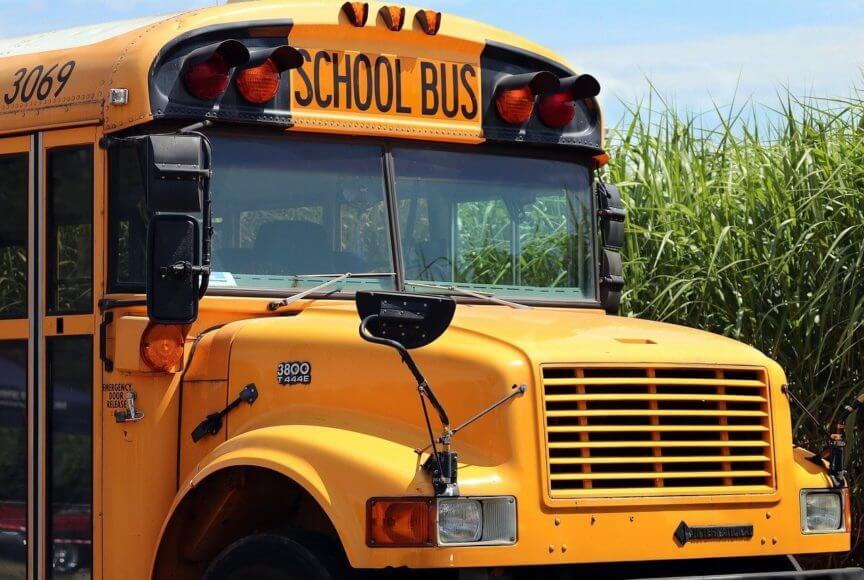
$75 Million to Fund Panic Alarms in New Jersey Schools
In February of 2019, Governor Murphy of New Jersey signed P.L. 2019, c. 33, Alyssa’s Law, requiring all of the state’s public schools to install silent panic alarms that will alert law enforcement during emergencies such as school shootings. Alyssa’s Law was named in honor of Alyssa Alhadeff, a 14-year old student who died among the 17 people killed in the school shooting at Marjory Stoneman Douglas School in 2017,
In 2020 New Jersey will allocate $75 million to fund eligible projects that enhance school security in all of New Jersey’s school districts, giving priority to the installation of panic alarms systems. New Jersey’s School Development Authority (NJSDA) has now released preliminary guidelines to guide school districts to apply for funding for panic alarms.
Why Panic Alarms?
School attacks begin and end very quickly and having an effective and immediate mechanism to alert law enforcement of school shootings can save lives. For instance, in a recent report examining extreme school violence, the U.S. Secret Service found that none of the school attacks they analyzed lasted more than 15 minutes. Having a reliable, rapid emergency communication system is not only essential but common sense, so schools can receive the help they need to prevent and mitigate acts of violence and protect the lives of children and school personnel.
Panic Alarm Definition
In Alyssa’s Law, “panic alarm” is defined as a silent security system signal generated by the manual activation of a device intended to signal a life-threatening or emergency situation requiring a response from law enforcement upon activation. The panic alarm must comply with the following specifications:
Panic Alarm Specifications
- Linked directly to law enforcement: The alarm must be directly linked to local law enforcement authorities. If the school is located in a municipality in which there is no municipal police department, the Superintendent of State Police will designate a location.
- Immediate transmission: The alarm shall immediately transmit a signal or message to law enforcement upon activation.
- Inaudible: The alarm shall not be audible within the school building.
- Comply with national standards: The panic alarm must adhere to nationally recognized industry standards, including the standards of the National Fire Protection Association (NFPA) and Underwriters Laboratories.
- Installed by licensed professionals: Only individuals licensed in the alarm business as defined by NJ law, will be able to install the panic alarm. For more detailed information see section 7 of P.L.1997, c.305 (C.45:5A-27).
- Approved alternatives: School districts will be allowed to equip its elementary and secondary school buildings with alternative emergency mechanisms as long as those are approved by the Department of Education.
To learn more about funding for Alyssa’s Law, download our Quick Guide to Alyssa’s Law Grants
Quick Guide to Alyssa’s Law Grants (New Jersey)
In New Jersey, Governor Murphy signed Alyssa’s Law back in February 2019. This legislation requires the state’s public schools to install silent panic alarms that can be activated in case of emergencies such as school shootings. Funding to help school districts comply with this law will be made available in 2020. The State of new Jersey School Development Authority (NJSDA) has now released preliminary guidelines to help school districts prepare to apply their grant application. Here’s our quick guide to understanding the grant application process.
What will this funding cover?
- Installation of panic alarm systems linked to local enforcement in accordance with Alyssa’s Law and certain school security upgrades after certification of Alyssa’s Law compliance.
What sort of panic alarms are covered?
Panic alarm is defined as a silent security system signal generated by the manual activation of a device intended to signal a life-threatening or emergency situation requiring a response from law enforcement upon activation. The panic alarm must comply with the following specifications:
- Linked directly to law enforcement: The alarm must be directly linked to local law enforcement authorities. If the school is located in a municipality in which there is no municipal police department, the Superintendent of State Police will designate a location.
- Immediate transmission: The alarm shall immediately transmit a signal or message to law enforcement upon activation.
- Inaudible: The alarm shall not be audible within the school building.
- Comply with national standards: The panic alarm must adhere to nationally recognized industry standards, including the standards of the National Fire Protection Association (NFPA) and Underwriters Laboratories.
- Installed by licensed professionals: Only individuals licensed in the alarm business as defined by NJ law, will be able to install the panic alarm. For more detailed information see section 7 of P.L.1997, c.305 (C.45:5A-27).
- Approved alternatives: School districts will be allowed to equip its elementary and secondary school buildings with alternative emergency mechanisms as long as those are approved by the Department of Education.
Examples of Approved Systems
- Smart phone and computer applications
- Personal carry wireless activation devices
- One or more wireless panic button stations
- One or more wired panic button station(s), with optional supplemental wireless stations and devices
- Integrated security system that includes wired panic alarms and personal carry wireless activation devices and/or smartphone and computer applications, access control, lockdown notification, security video, etc.
What other security upgrades are included?
After a school district complies with Alyssa’s law, unused district-allocated funds may be used for security improvements including:
- Bollards or other barriers impact rated for vehicles along the roadway or curb line in front of the school to prevent vehicles from gaining access to exterior walls, entrances, and areas of mass gatherings such as courtyard
- Lighting around buildings and parking lots
- Surveillance cameras
- Signage
- Secure vestibule with interior doors and an access control system with remote unlocking features, intercom, fixed cameras, and bullet resistant glazing at the school’s main entrance.
- Access control systems that remote lock/unlock access doors.
- Keyless locking mechanism on interior doors to spaces serving as safe havens during lockdowns.
- Ballistics or shatter resistant film on glass entrance door sidelights and other vulnerable first floor areas.
- Surveillance cameras
- Dedicated servers and emergency generator for security systems.
Notes:
- The installation of new systems and/or scopes of work requiring a construction permit will require project approval from the Office of School Facilities (OSF).
- The project must also be included in a Long-Range Facilities Plan (LRFP). Detailed guidance on reporting requirements can be found here.
TIP: submit project applications to the OSF as early as possible to ensure complete and approvable submissions.
How will panic alarms and security upgrades be funded?
- Funding for the panic alarms and security upgrades will come from the Secure Our Children’s Future Bond Act.
- The total grant allocation is $75 million.
How will funding be distributed?
- District allowance will be based on student enrollments and grades and will be calculated similarly for all districts.
- To find out your district’s allowance, see Appendix A here.
Which school districts are eligible?
- Public school districts as defined in the Bond Act.
- Schools serving any combination of district students in grades K-12, including district-owned buildings and leased buildings.
- Renaissance and charter schools are not eligible to apply.
- Districts must either demonstrate compliance with Alyssa’s Law or submit a school security grant application requesting funding to achieve compliance.
- If a school has already installed a panic alarm it may receive reimbursement for those costs.
Deadline & important dates
- Certification period opens January 2020
- Grant application opens April 2020
- Deadline for grant application will be May 2020 (the specific date is yet to be determined).
- Note: if a district misses the deadline to apply or fails to submit a grant application, proof of Alyssa’s Law will still be required.
- The NJSDA highly recommends that school districts get certified prior to the opening of the grant application period so they can better inform their grant applications.
Who will oversee compliance?
- The NJSDA will oversee compliance.
- NJSDA’s regulations can be found here:
How should school districts submit their applications?
Applications can be submitted using NJDOE’s online Electronic Web Enabled Grant (EWEG) system accessed through NJDOE Homeroom.
- Click for the complete NJDA guidelines for Alyssa’s Law funding.
